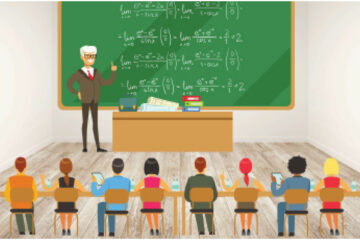High school students face many of the same friendship dynamics as elementary and middle school students, yet friendship operates in distinct ways in these later adolescence years. The buffering effect friends provided in earlier childhood, for example, seems to disappear. “Not only did the presence of friends not reduce stress,” writes Lydia Denworth in the 2020 book Friendship: “It made things worse. Cortisol levels went up.”
By the time students reach high school, friendships become more stable. “In middle school, it’s unusual for an individual to maintain the same group of close friends over the space of 18 months,” says B. Bradford Brown, an educational psychology professor at the University of Wisconsin-Madison: “In high school, that is no longer the case.”
Likely because individual identities are more solidified, older teens tolerate greater dissimilarity in one another. As a result, compromise and collaboration increasingly take the place of conformity.
Like friendship churn, concern over one’s reputation in broader groups peaks in middle school (and early high school). That leaves most high school students relatively less worried about their larger reputation and more focused on the social dynamics within their chosen peer groups, Brown says.
By the tenth grade, teens tend to interact more with romantic partners than anyone else, and research Laursen has been part of shows that as adolescents become involved in romantic relationships, their drinking increasingly mirrors that of their partners rather than their friends.
Peer influence as a positive?
As a predictable corollary, romantic partners begin to exert more influence than friends in high school, and friend groups more than larger crowds.
Most educators know the basics of peer pressure. One famous study showed that the number of one’s friends using drugs is the biggest determinant of drug use. We also know that when peers are present, adolescents take more risks (for example, teenage males drive faster in the presence of other teenage boys).
But recent research reveals a twist: It’s not necessarily because of any direct egging on. Just presence is enough, because the reward centers of adolescents’ brains are more active with peers than when alone, according to the research of Temple University’s Laurence Steinberg.
For her book, Denworth tracked him down as well as Sarah-Jayne Blakemore, a professor of psychology and cognitive neuroscience at University of Cambridge, who explained the academic upside: “Risk taking in an educational context is a vital skill that enables progress and creativity.”
That’s just one positive lens on peer influence. Scott Gest, a University of Virginia professor, says: “People talk about negative peer influence … but they neglect the pretty substantial literature that shows a lot of negative behavior of high school kids is discouraged by friends.
There is a lot of very positive pressure that peers apply, like, ‘No man, that’s stupid.’” This “obstructing” is one of the many underreported modes of peer influence, Brown says. There’s also teasing, reinforcement such as laughing or nodding, and creating situations that facilitate a certain type of behavior, like throwing an unchaperoned party.
None of these modes is inherently good or bad, Brown points out. A teen could just as easily create a situation conducive to altruism, like asking a friend to meet them at the food pantry before a concert, knowing full well they’ll end up handing out meals for a few minutes—or cracking a joke about tongue brushing that reinforces oral hygiene.
“Behavioral display,” or modeling that leads to emulation, is another type of peer influence. In one 2018 study of college freshmen, researchers found “having friends with higher propensities to study is predictive of receiving higher freshman grades.” Because the study looked at both assigned roommate pairings and chosen friend groups, the researchers were able to show the effect wasn’t just a reflection of “selection bias,” with studious kids having already chosen to befriend each other.
Hanging out with someone studious, they concluded, caused adolescents to study for more hours and post higher grades. The findings confirm previous research showing a correlation between how a child views the importance of doing well in school and how their friends do.
Similar effects have been demonstrated for volunteer work and health-promotive behaviors, such as exercise. Positive change has also been documented in high school students dating high-functioning peers.
What does all this mean for educators? Influential students can be explicitly tapped to improve classroom dynamics. In one program, kids were trained to publicly encourage anti-conflict norms. Disciplinary reports of student conflict dropped 30 per cent over one year.
This success may be owed in part to the fact that the program enlisted kids’ help. Efforts that engage teens in actual, real-life tasks have been the most promising when it comes to changing the content of the values transmitted within adolescent peer groups.
Other successful efforts to “benevolently exploit peer influence,” include using small group discussions to combat bullying.
Even greater benefits of cooperation
A cousin of peer influence is collaboration, and high school students get unique benefits from it. Carefully structured cooperative learning experiences have been tied to students exerting greater effort and using higher-level reasoning strategies more frequently, ultimately boosting achievement and decreasing problematic behaviors, according to the research of Michigan State University’s Cary Roseth.
What’s more, “in a study of high school seniors,” he reports, “a predisposition to work with peers cooperatively was found to be highly correlated with psychological health.”
The promise of boosted academic and social-emotional learning doesn’t always have to mean group assignments though. Laursen says by high school “many kids hate these sorts of paired activities when a grade is riding on the product.”
On the other hand, they appreciate the opportunity to work alongside a peer on their own work. Friends are distributed over classes so the bump students see from working with someone they like and trust may be easier to get in a study hall setting where students undertake, in toddler parlance, “parallel play” or “being with.”
Both logistical benefits and moral support can also be fostered in a high school class with no preexisting friendships. One small Australian study of first-year university students showed that when students discussed class content outside of class, they were more likely to progress to second year. Friends provided feedback, reassurance, and encouragement that “increased students’ emotional engagement, their enthusiasm and interest in the course content and in the classroom.” The study’s authors ultimately encouraged teachers to instruct students to talk to each other during breaks, exchange contact information, and consider arranging study sessions.
During distance learning this fall, Mira Debs, executive director of Yale’s education studies program, had students write introductions. She hosted a weekly virtual lunch. One student set up an optional group text message chain for the class. Each of these actions increases a sense of belonging—which in turn boosts motivation—and also provides students with tangible resources.
Elizabeth Self, an assistant professor at Vanderbilt University, explains how these college-level findings relate to teens: “If you think about an AP class—high workload, high stress—the way that kids can come together to study, the way they come together to share notes, the way they come together to figure out an assignment …. For those that do, it’s a huge advantage.”
Technology and distance
With schools across the country closed, child development experts worry most about the future of our youngest learners. After all, high school students already had mechanisms in place for connecting at a distance, practices like exchanging Snapchat videos about the parts of the homework that don’t make sense.
But Denworth says we can’t discount “Zoom fatigue.” In a recent article for Psychology Today, she describes a book called Relating Through Technology by Jeffrey Hall, a professor of communication studies at the University of Kansas. He told Denworth, “Compared to face to face, texting and using social media, energy use during a Zoom call is higher.” Disruptions like your own image, delays, and cross-talk make video calls more intense. They also heighten loneliness: “Zoom is exhausting and lonely because you have to be so much more attentive and so much more aware of what’s going on than you do on phone calls.”
And even though teens can socialize virtually, Brown says, “the intensity of seeing close friends and romantic partners in person is difficult to give up, so the lack of those face-to-face opportunities is going to create anxiety.” Their developmentally appropriate craving for intimacy is what drives “the way that individuals 18 to 25 are behaving right now,” he says, “having real difficulty engaging in social distancing, wearing a face covering, and staying feet apart.”
While distance learning may work best for teenagers, everything we know about friendship in late adolescence suggests they too would benefit from in-person learning experiences at the earliest safe opportunity.
This article is part of the “Friendship in Schools” series, which explores the complexities of friendship at various stages of learning.





